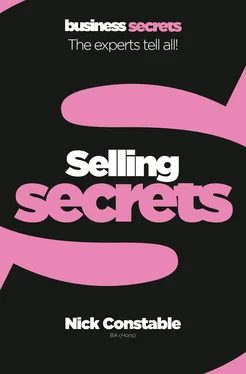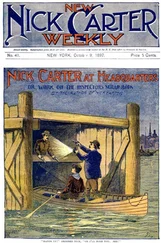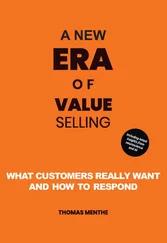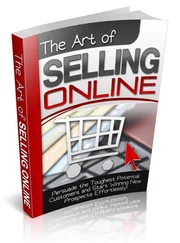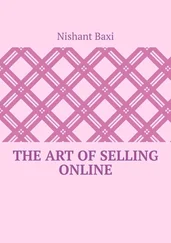Nick Constable - Selling
Здесь есть возможность читать онлайн «Nick Constable - Selling» — ознакомительный отрывок электронной книги совершенно бесплатно, а после прочтения отрывка купить полную версию. В некоторых случаях можно слушать аудио, скачать через торрент в формате fb2 и присутствует краткое содержание. Жанр: unrecognised, на английском языке. Описание произведения, (предисловие) а так же отзывы посетителей доступны на портале библиотеки ЛибКат.
- Название:Selling
- Автор:
- Жанр:
- Год:неизвестен
- ISBN:нет данных
- Рейтинг книги:5 / 5. Голосов: 1
-
Избранное:Добавить в избранное
- Отзывы:
-
Ваша оценка:
- 100
- 1
- 2
- 3
- 4
- 5
Selling: краткое содержание, описание и аннотация
Предлагаем к чтению аннотацию, описание, краткое содержание или предисловие (зависит от того, что написал сам автор книги «Selling»). Если вы не нашли необходимую информацию о книге — напишите в комментариях, мы постараемся отыскать её.
Selling — читать онлайн ознакомительный отрывок
Ниже представлен текст книги, разбитый по страницам. Система сохранения места последней прочитанной страницы, позволяет с удобством читать онлайн бесплатно книгу «Selling», без необходимости каждый раз заново искать на чём Вы остановились. Поставьте закладку, и сможете в любой момент перейти на страницу, на которой закончили чтение.
Интервал:
Закладка:
case studyIan’s sales manager was unhappy that Ian wasn’t visiting the customers more regularly. Ian thought he could be more efficient just telephoning and sending letters. His boss didn’t see it like that. “I might as well send out a catalogue, instead of employing expensive salespeople!” he told Ian. The point of employing Ian as one of the company’s salespeople was that he could build strong relationships and add value to the selling process through person-to-person communication. He could influence the customer’s decision process and build trust for the longer term.
“To give real service you must add something which cannot be bought or measured with money, and that is sincerity and integrity”
Douglas Adams, English comic writer
Be visible. It goes without saying that if you’re not making the effort to stay in regular touch with your customers and prospects, you can quickly become invisible, and perhaps the representative of another company gets the chance to exert their influence instead. This is sometimes called ‘mind-share’. Find reasons to call, to visit, and keep yourself at the forefront of the customer’s mind.
Push and pull. The key to maintaining a winning relationship that makes the difference in a sale is to achieve the right balance between ‘pushing’ and ‘pulling’. Pushing means keeping yourself visible without annoying or irritating the customer with your constant ‘nagging’. Pulling means drawing the customer into the relationship using ‘Business Doctor’ skills (see 4.7), for example, showing empathy, being curious, and adding value by being their ‘capable friend’.
A relationship is based on two parties making an investment in it.
Selling to the right people
Oneof the most common mistakes made by salespeople, even those with years of experience, is trying to sell to the wrong people. In this chapter we’ll look at the importance of identifying the individuals who have the power to make change happen, and the value of analysing the customer’s organization to discover the roles that people play in the buying and selling process.
2.1 Understand your customer
Because we salespeople are often under pressure to find new prospects and constantly add more opportunities to the pipeline, we can often find ourselves tempted to chase every possible sales lead. But not everyone who expresses interest actually has the authority, motivation and ability to buy.
Let’s look at some pitfalls and how to avoid them:
Who owns the problem? One of the best guides for identifying the correct people, or person, is to find out who has ultimate responsibility for the business problem or ‘pain’ that you think you can solve. Remember that they may still lack the authority alone, but it’s a good starting point.
Come out of your comfort zone. It’s easy to get stuck in your comfort zone, convincing yourself that those friendly individuals who always take your call are the ones who will buy. This is especially true with existing customers. Force yourself to ask hard questions of yourself and them, and to make new contacts with greater authority.
“There are one hundred and ninetynine ways to get beat, but only one way to win; get there first”
Willie Shoemaker, American jockey
Make a straw man. Draw up a profile of your ideal customer, and their attributes, as a sort of test. This is called a ‘straw man’. Look at your previous and existing customers. Consider the ideal types of business they are in, and typical job roles.
Spot the ‘tyre kickers’. There’s a big difference between people who take great interest in your product, and those who actually have the authority to buy. Some people, and companies, just want a free education, and will give the impression they can buy so that you’ll let them play with your product.
Are you first? Ask yourself: is this customer already evaluating other suppliers? Have you come to the party late? If you’re second or third, it might be an indication of their serious intent. On the other hand, experience shows us that if you didn’t get there first, you’re probably just ‘cannon fodder’, there to provide a comparative offer.
Do some analysis and research to make sure you target the right companies and individuals.
2.2 Understand their organization
Whether you are approaching a new prospect for the first time, or selling to an existing customer, it’s vital to understand how their organization is structured, and who does what. Doing this will help you target the right people with the right messages.
Broaden your horizons. Your likely starting point with a new customer is often a single person. Find out who else works alongside them, above them and below them. The more contacts you create across the wider organization, the more chances you will have to discover ‘pain’ and determine how and if they will buy.
Draw the organization chart. As soon as you can, you should try to draw out the whole of the customer’s organization on a sheet of paper, showing the different departments, divisions, teams, individual job titles
case studyAlison represented a large software company as the account manager for British Telecom (BT), an enormous UK company. She made it her business to try to talk to every part of their organization, and make contacts at many levels of their hierarchy. It took some time, but eventually she had formed a pretty good picture of how these different teams and departments influenced each other and even competed against each other. One day, a BT director told Alison he always enjoyed speaking to her, because she knew more about how their company worked than he did!
“ If you think you’re too small to have an impact, try going to bed with a mosquito in the room”
Dame Anita Roddick, Founder, The Body Shop
and people’s names. This is a great way of discovering what you don’t yet know, and encouraging you to go and find out!
Identify spheres of Influence. The organization chart will only tell you the official version of the customer’s hierarchy. The next step is to take an interest in the unofficial ways in which people within organizations group together in loose ‘spheres of influence’. Whose opinions command respect? Who do the senior people listen to? You can map out these connections as you learn more about the people involved.
Pick up clues about the culture. Of course, every organization is different; not only in the way they are structured, but also in the working culture they have developed. It’s important to pick up clues about the way things get done, and observe the accepted norms of behaviour. For example, how much authority is delegated to managers? Is it a sales-led or an engineering-led organization? Is everything done by committee?
Find out how decisions are made at your target customer’s organization.
2.3 Know the roles that buyers play
Once you have a clear idea of how your customer’s organization is structured, you’ll hopefully have the names and job titles of a number of people you want to deal with. The customer may also introduce new contacts to you, as you move through the Selling Cycle. All these people will have a greater or lesser importance to you depending on the role they play.
Let’s look at some of these buying roles.
User. This describes anyone who is simply the intended user of your product or service. Think of them as the ultimate ‘end customer’ within the organization. Don’t overlook them – they have very valuable information
one minute wonderList all your contacts and allocate one or more buyer roles to each of them. This will help you to assess how you approach them, how useful they will be, and therefore, how much time and effort you expend working with them.
Читать дальшеИнтервал:
Закладка:
Похожие книги на «Selling»
Представляем Вашему вниманию похожие книги на «Selling» списком для выбора. Мы отобрали схожую по названию и смыслу литературу в надежде предоставить читателям больше вариантов отыскать новые, интересные, ещё непрочитанные произведения.
Обсуждение, отзывы о книге «Selling» и просто собственные мнения читателей. Оставьте ваши комментарии, напишите, что Вы думаете о произведении, его смысле или главных героях. Укажите что конкретно понравилось, а что нет, и почему Вы так считаете.
